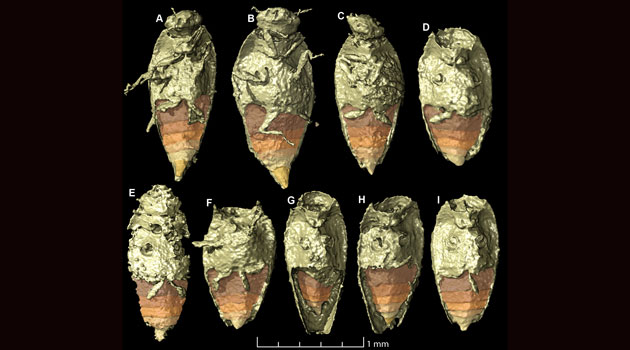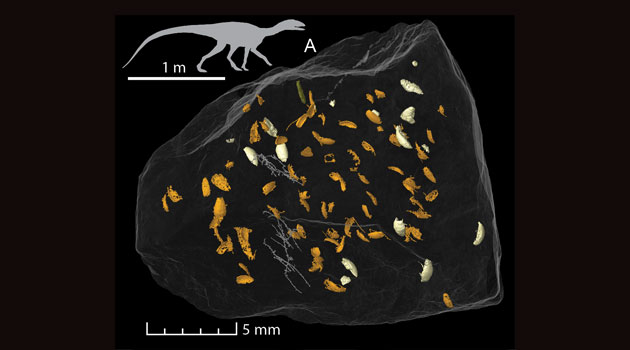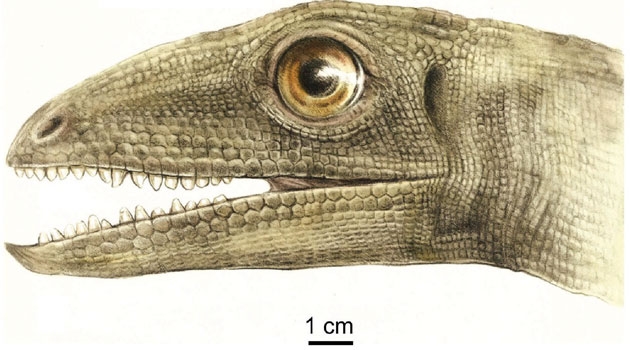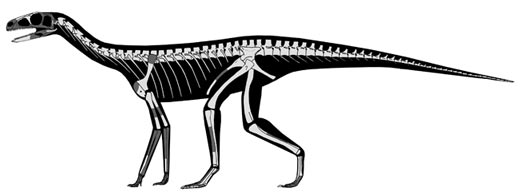Triassic Beetle Described from Fossil Poo by Researchers
A new species of ancient beetle has been named and described based on preserved remains found in the poo (coprolite) of an ancestor of the dinosaurs. The beetle named Triamyxa coprolithica, is the first insect to be scientifically described from coprolite and this research, suggests that coprolite remains could become as important as insects preserved in amber when it comes to identifying new species.

Published in Current Biology
The researchers from Uppsala University (Sweden), in collaboration with entomologists from Sun Yat-sen National University (Taiwan), Jena University (Germany) and Guadalajara University in Mexico used synchrotron microtomography to examine the coprolite’s contents and sophisticated computer software to rebuild the tiny insects so that they could be studied. The coprolite contained numerous insect remains preserved in three-dimensions. Most insect fossils are squashed so flat that deciphering them is extremely difficult.
The researchers conclude that coprolites may prove to be an important source of information for exploring insect evolution. Their paper is published this week in “Current Biology”.

Silesaurus opolensis
Although the scientists cannot be certain, they speculate that the coprolite represents the scat from a relative of the dinosaurs called Silesaurus opolensis, which is known from the same Polish deposits associated with the coprolite. An animal (probably S. opolensis), swallowed a large number of these tiny insects 230 million years ago, the greedy reptile inadvertently giving palaeontologists a rare opportunity to study a beetle, at a time (the Triassic), when many different types of insect were evolving and diversifying.
Phylogenetic analysis suggests that T. coprolithica is a member of Myxophaga (fungal beetles), a small suborder of beetles with a sparse fossil record whose extant representatives are small and often associated with wet environments.

Complete Specimens Preserved
Some of the beetles were almost complete with even their antennae and thin legs intact and attached to the body.
Commenting on the significance of this research, lead author of the scientific paper, Martin Qvarnström, (Uppsala University), remarked:
“We were very positively surprised by how many beetle remains there were in the coprolite and above all how well preserved they were. We really have to thank Silesaurus, who was probably the animal that helped us collect and preserve the beetles”.
The labrador-sized Silesaurus did not usually dine on such small insects, it probably was a generalist eating a wide variety of prey. It had a beak that was possibly used to bite insects just like today’s living dinosaurs – the birds. Despite the fact that Silesaurus ingested lots of individuals of Triamyxa coprolithica, these small beetles probably did not constitute its main food. Triamyxa lived in the same environments as larger insects and it was these insects as well as small vertebrates that probably made up the majority of the diet of this fast running, agile reptile.

The beetle fossils are reminiscent of other beetle remains associated with amber. Both coprolites and amber are capable of preserving insects in three-dimensions and this study suggests coprolites can be extremely valuable for studying early insect evolution and extinct animal food chains at the same time.
The scientific paper: “Exceptionally preserved beetles in a Triassic coprolite of putative dinosauriform origin” by
Martin Qvarnström, Martin Fikáček, Joel Vikberg Wernström, Emmanuel Arriaga-Varela, Per E. Ahlberg and Grzegorz Niedźwiedzki published in Current Biology.
Visit the Everything Dinosaur website: Dinosaur Toys and Models.

